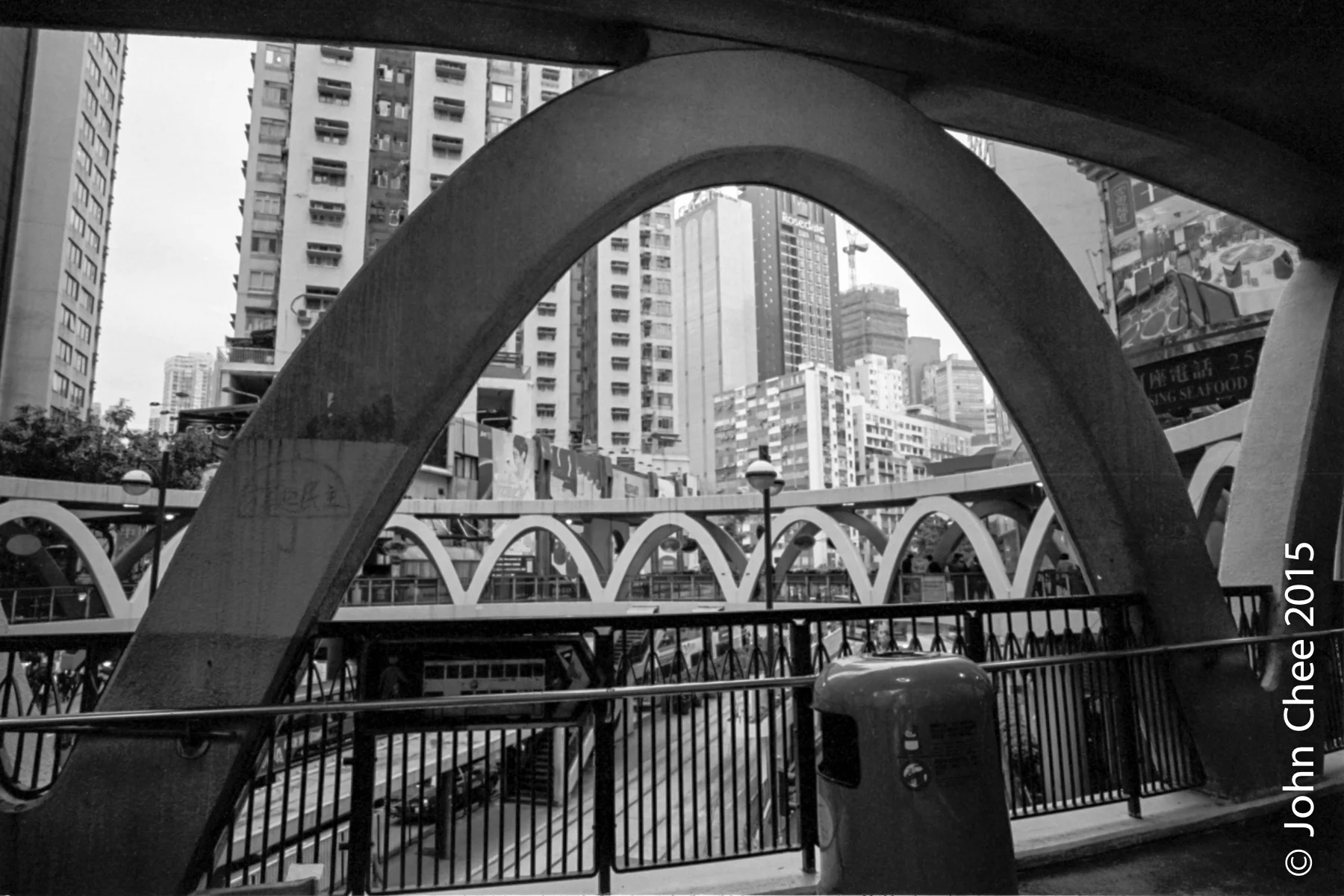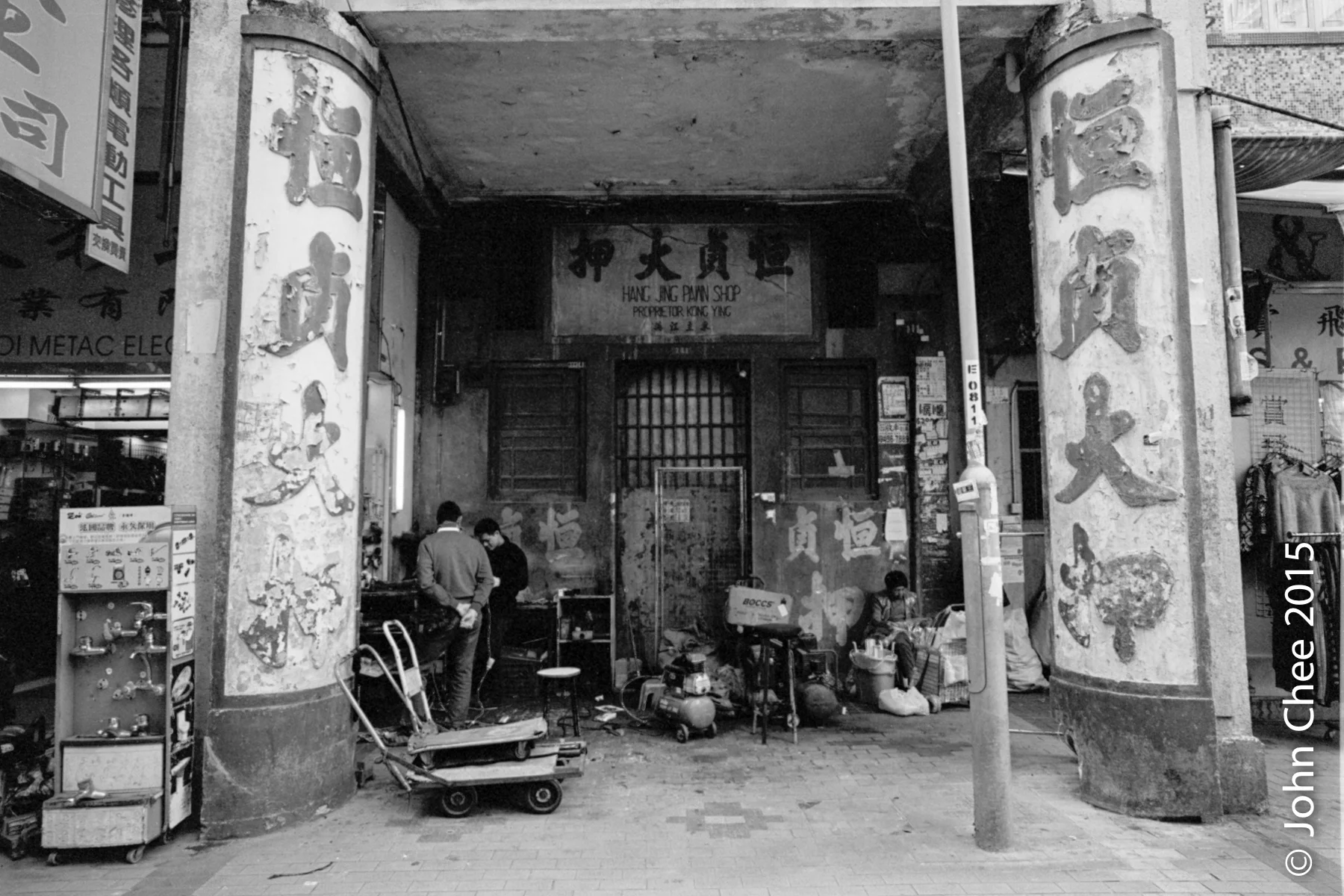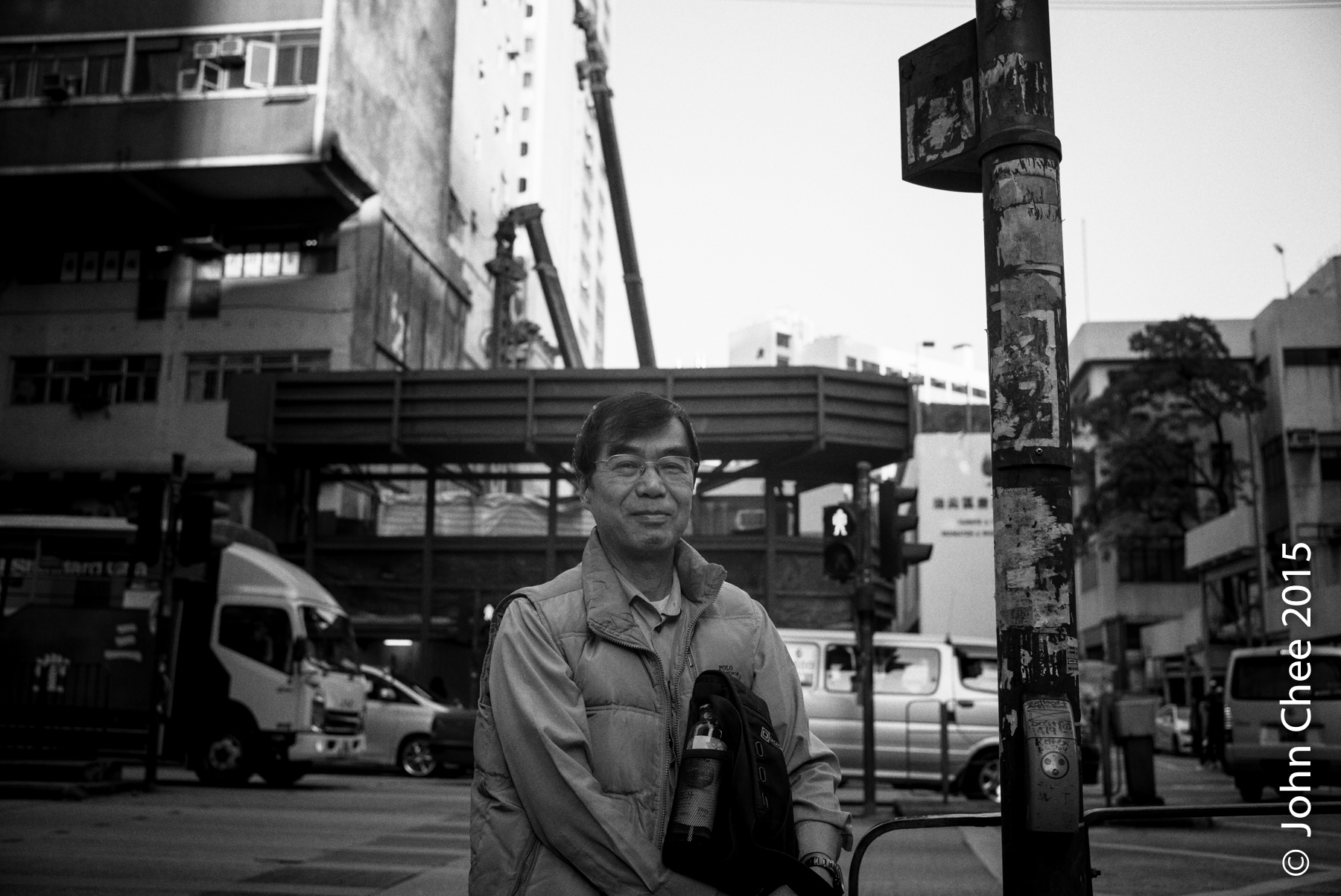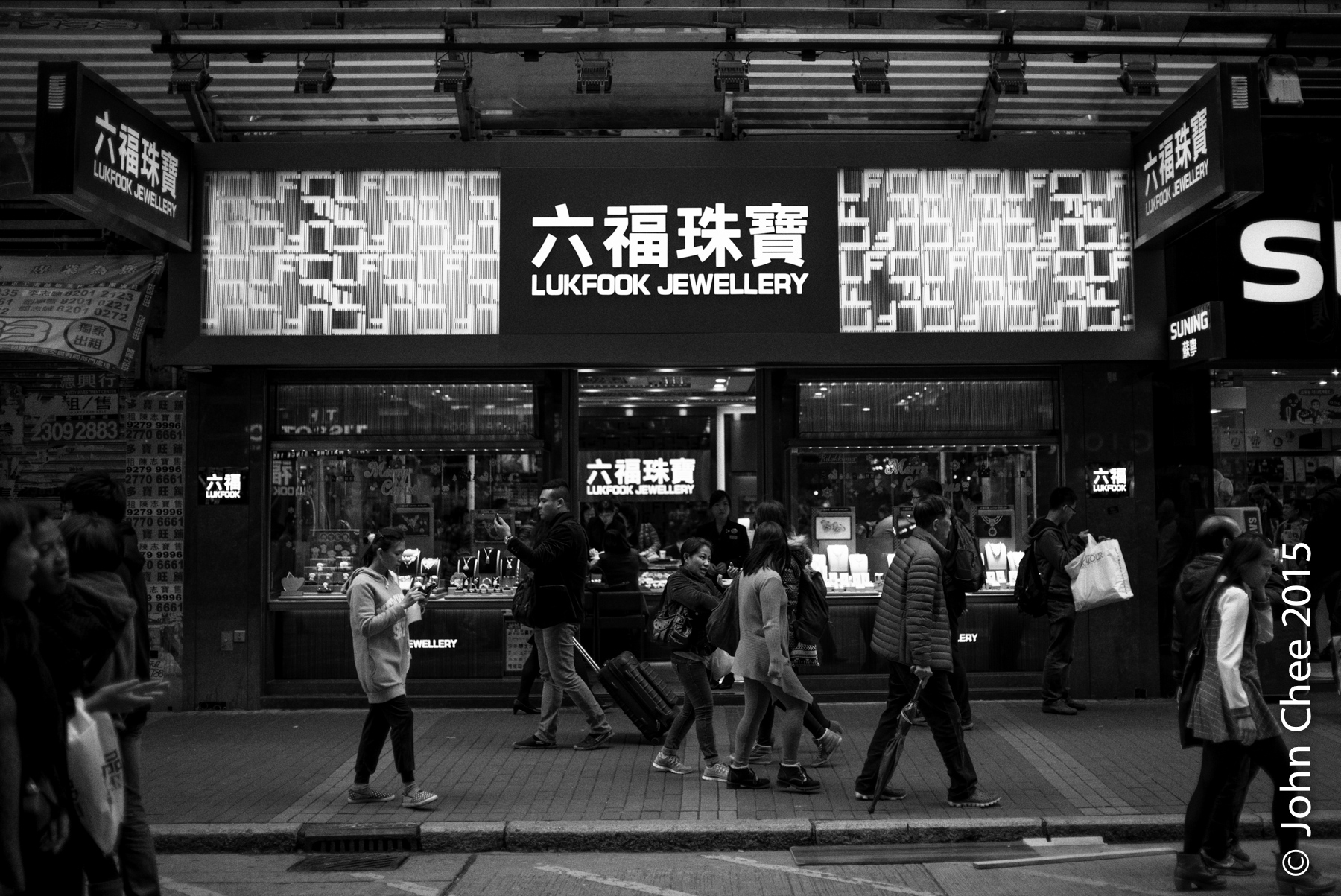










































































Your Custom Text Here
New waves of movements have emerged in different parts of the world for various purposes. Among them, there seems to have one thing in common, searching for equality, economically, politically, etc. The two cities that I call home are going through some major social changes. The Umbrella Movement in 2014 in Hong Kong asked the Communist Party of China to keep its promise to deliver democracy to the people of Hong Kong. The Black Lives Matter movement and initiatives inspired by the Occupy Movement in New York City have caught the public's attention.
Not long ago, we were unsure about what the Millennials are up to. This generation, however, is now leading many of the social movements challenging what they see as the status quo. Something that was part of the blame for numerous underlying issues that made us rethink development.
Some of these issues make up the theme of this series. It is set to study the problems in-common between Hong Kong and New York, two of the global financial centers with dramatically different social systems. I wondered how does Hong Kong, a former colony compare to the democratic New York City on issues like housing affordability, aging city infrastructure, social justice, tourism, immigration, elderly poverty, government accountability, upholding the rule of law, etc.? In Hong Kong, students occupied the streets calling for genuine universal suffrage and believed that democracy is the answer. Issues like the decaying infrastructure, aggressive policing, etc. in New York City make people question what has happened to the democracy in New York.
The New Yorker side of me would like to tell the Hong Konger side, “Be careful what you wish for." But when I flip it, I am seeing instances of injustice and incompetent governing in Hong Kong are trending up reaching an alarming level. For me, it has become clearer than ever that democracy is a journey. Throughout this project, I kept thinking of what Ernest Hemingway said in A Farewell to Arms, "The world breaks every one afterward many are strong at the broken places.”
- John Chee on September 28, 2015
New waves of movements have emerged in different parts of the world for various purposes. Among them, there seems to have one thing in common, searching for equality, economically, politically, etc. The two cities that I call home are going through some major social changes. The Umbrella Movement in 2014 in Hong Kong asked the Communist Party of China to keep its promise to deliver democracy to the people of Hong Kong. The Black Lives Matter movement and initiatives inspired by the Occupy Movement in New York City have caught the public's attention.
Not long ago, we were unsure about what the Millennials are up to. This generation, however, is now leading many of the social movements challenging what they see as the status quo. Something that was part of the blame for numerous underlying issues that made us rethink development.
Some of these issues make up the theme of this series. It is set to study the problems in-common between Hong Kong and New York, two of the global financial centers with dramatically different social systems. I wondered how does Hong Kong, a former colony compare to the democratic New York City on issues like housing affordability, aging city infrastructure, social justice, tourism, immigration, elderly poverty, government accountability, upholding the rule of law, etc.? In Hong Kong, students occupied the streets calling for genuine universal suffrage and believed that democracy is the answer. Issues like the decaying infrastructure, aggressive policing, etc. in New York City make people question what has happened to the democracy in New York.
The New Yorker side of me would like to tell the Hong Konger side, “Be careful what you wish for." But when I flip it, I am seeing instances of injustice and incompetent governing in Hong Kong are trending up reaching an alarming level. For me, it has become clearer than ever that democracy is a journey. Throughout this project, I kept thinking of what Ernest Hemingway said in A Farewell to Arms, "The world breaks every one afterward many are strong at the broken places.”
- John Chee on September 28, 2015
An Umbrella Movement protester was greeted by supporters. (Mong Kok, Hong Kong)
Umbrella Movement protest in front of the Legislative Council (Central, Hong Kong)
A scene from one of the many localized protests after the Umbrella Movement (Sham Shui Po, Hong Kong)
Mr. Raphael Wong (right), one of the prominent pro-democracy activists, is now facing charges as a consequence of his involvement in various civil disobedient activities. (Sham Shui Po, Hong Kong)
Trace of the Umbrella Movement on one of the poles of this elevated walkway (Causeway Bay, Hong Kong)
A view from the top of the Lion Rock Mountain, where an enormous banner was hung to express the wish for having a genuine universal suffrage. The government deemed the hanging of such banner is illegal, and thus it was removed within a day. Similar banners on the same spot were hung and removed at least two times subsequently. (Lion Rock, Hong Kong)
Ms. Kaikai Cho, Mapopo Community Farm, explaining to visitors why the government should not convert farmland in Hong Kong into shopping malls and apartment buildings. (Fanling, Hong Kong)
Abandoned agricultural machinery. (Kwu Tung, Hong Kong)
A farmer who is unsure of his future (Kwu Tung, Hong Kong)
Vegetable field. On the other side of the mountain is Shenzhen, China, a highly developed city that is eager to swallow the farmlands in Kwu Tung. (Kwu Tung, Hong Kong) (follow-up Blog Post)
Food with a "Product of Hong Kong" label is a hit due to the concerns over food safety from their alternatives imported from China. However, this type of local stores will soon become extinct due to the high rent and competition from chain stores funded by Mainland Chinese. (Sham Shui Po, Hong Kong)
A smuggler (with her goods) waiting in front of a drug store (Mong Kok, Hong Kong)
Smugglers from China stuffing their suitcases with baby formula, hair shampoo, etc. in the middle of a sidewalk. These items from Hong Kong are popular in China as fake goods available in Chinese stores become health hazards to the general public. (Mong Kok, Hong Kong)
Smugglers (known as the "suitcase gangs") organizing their goods in suitcases by the entrance of the MTR (subway) (Mong Kok, Hong Kong)
Bulk buying by shoppers from China, who virtually take over high end shopping districts. (Tsim Sha Tsui, Hong Kong)
High end shopping districts are overwhelmed by shoppers from China. Most main brand stores ask shoppers to wait in line before entering their stores. (Sham Sha Tsui, Hong Kong)
A seemingly not-so-talented street performers from China, who played loud music attracted a huge crowd (Mong Kok, Hong Kong)
A talented street performers from China did not attract a crowd (Mong Kok, Hong Kong)
The conviction of corrupted former officials made headline news. However, no charges have been pressed for the alleged corruption of current and former Chiefs of the city exposed by Australian and Hong Kong newspapers. (Kowloon, Hong Kong)
A senior citizen spending her days alone on the street (Cheung Sha Wan, Hong Kong)
A senior citizen living on collecting and selling carton boxes. (Mong Kok, Hong Kong) (follow-up Blog Post)
People with disabilities living under a highway (Sham Shui Po, Hong Kong)
Abandoned pawn shop door front (Sham Shui Po, Hong Kong)
Immigrants like this Tai Chi master do what they know best to make ends meet. However, many still rely heavily on government subsidies and assistance from pro-Beijing political parties. Every day, at least 150 Chinese immigrants arrive in Hong Kong. In other words, over a million immigrants from China have moved to Hong Kong since China's takeover in 1997. Thus, at least one-seventh of the population has Chinese background, who are naturally more receptive to policies pushed by the pro-Beijing political parties and government. (Tsuen Wan, Hong Kong)
Immigrant workers gathered at a street corner on Sundays due to the lack of programs for their integration to the local communities (Cheung Sha Wan, Hong Kong)
Immigrants/visitors from South Asia selling shoes on the street. It's likely illegal depending on their visa status and whether they have licenses to sell. (Sham Shui Po, Hong Kong)
Unlicensed goldfish vendors operate in the street by a football stadium before sunrise. Regular customers visit with a flashlight. By 7:00 a.m. in the morning, the vendors disappear to avoid being arrested. (Flower Market Road, Hong Kong)
Panhandlers from China can be found on every other block in Hong Kong (Tsuen Wan, Hong Kong)
Towards the end of the Umbrella Movement, conflict between pro-democracy and pro-Beijing groups has started in the most busiest streets in Mong Kok (known for its night markets). Police often get involved and make arrests of activists from the pro-democracy side. Confrontation has not stopped and it's been going on over 300 days to-date. (Mong Kok, Hong Kong)
One of the weekly "shopping" protests in a usually jam-packed streets in Kowloon. (Mong Kok, Hong Kong)
A senior citizen selling old DVDs on the street. Elderly poverty is on the rise while government subsidies is extremely limited. (Mong Kok, Hong Kong)
A senior citizen selling old cloths to make a living. Government has deprioritized policy setting to cope with the aging populations. Instead, it pushes a number White Elephant construction projects that have been accused of benefiting corrupted businessmen who bribe government officials. (Sham Shui Po, Hong Kong)
Walled village #1. The last walled village (650-year-old) in Kowloon is slated for redevelopment, despite the effort by the public to preserve it as a historical site. (Nga Tsin Wai, Hong Kong)
Walled village #2 (Nga Tsin Wai, Hong Kong)
Walled village #3 (Nga Tsin Wai, Hong Kong)
A deserted neighborhood turned into a flea market temporarily. The site is the home of a high profile conflict between the government and people. Local residence was forced to move out so the lots can be redeveloped. (Sham Shui Po, Hong Kong)
A shop owner standing in front of where his business once was. The lot is now being redeveloped. (Yau Ma Tei, Hong Kong)
A victim of the high rent in Hong Kong. Emptied retail space with real estate ad covering its door front (Tsim Sha Tsui, Hong Kong)
Abandoned door front covered by real estate ads (Mong Kok, Hong Kong)
The rent for this small retail space probably costs more than a one-bedroom apartment in Hong Kong. The little revenue generated would not be sufficient to pay the landlord. Therefore, shutting down old neighborhood local stores has been the latest trend in the retail landscape. (Tsuen Wan, Hong Kong)
Drug stores like this dominate retail spaces near the border with China (Sheung Shui, Hong Kong)
There are mostly three kinds of retail shops in Mong Kok, jewelry shops, electronics and drug stores that can survive the high rent. They are tailored for tourists and smugglers from China. Most old stores are long gone as they could not deal with the heightened rent. These stores and visitors affect the community and destroy neighborhoods. Therefore, stores like this are not welcomed by the local communities. (Hong Kong)
Four corners of a junction in a neighborhood that gets popular among (i.e., flooded with) Chinese tourists. The corner stores are: two jewelry shops, a Rolex specialty shop and a drug store. Independent old neighborhood stores can hardly survive. (Tsuen Wan, Hong Kong)
Fours corners of a junction in a neighborhood. The corner stores are: two banks, a hot dog joint, and now closed clothing chain store, Urban Outfitter. The lot is taken by a bigger chain, Bloomingdale's (Upper West Side, Manhattan, New York)
Fours corners of a junction in a business district. The corner stores are: two banks, a drug store and a clothing chain store, Gap. (Midtown, Manhattan, New York)
Even a large store like this has to close down due to the unaffordable rent (Soho, Manhattan, New York)
Neighborhood retail stores are shut due to the heightened rent beyond reach (Upper West Side, Manhattan, New York)
Horse carriage #1. The horse carriage industry is under attack and may face elimination. Some real estate developers want to redevelop the lots currently occupied by horse stables owned by folks in the horse carriage industry. (Central Park, Manhattan, New York)
Horse carriage #2 (Central Park, Manhattan, New York)
A woman confronting a body painted half naked female character and her handler. This type of panhandlers, usually immigrants ask for US$20 posting with tourists. (Time Square, Manhattan, New York)
Superhero characters (mostly immigrants inside the costume) looking for business in Time Square (Midtown, Manhattan, New York)
Immigrants selling Churro for living. This lady was arrested after I took this image and I have not seen her since. (Time Square subway station, Manhattan)
Street performers confronted by police (Bryant Park, Midtown, Hong Kong)
A homeless person in a blizzard. In accordance with Bowery Mission, one out of every 143 New Yorkers is currently homeless (Midtown, Manhattan, New York) (follow-up Blog Post)
An elderly lady rushing to sell plastic bottles she had collected. Sale of plastic bottle takes place in Chinatown between 6:30 and 7:00 p.m. daily. (Chinatown, Manhattan, New York)
Holiday shoppers in front of department store window displays (Midtown, Manhattan)
Chinese, the world number one spending visitors enjoying themselves on the Fifth Avenue disregarding the other pedestrians who tried to get through. (Midtown, Manhattan, New York)
Broken traffic light in front of the Federal Court House (Lower Manhattan, New York)
Gas explosion with fatality that leveled three old buildings in 2015. In 2014, two buildings were destroyed in East Harlem due to gas explosion. These events show the aging infrastructure in NYC. (East Village, Manhattan, New York) (follow-up Blog Post)
Thousands of Falun Dafa practitioners marching toward the Consulate General office of China (Midtown, Manhattan, New York)
A student protesting against the proposal of tying students test scores to teacher performance (Midtown, Manhattan, New York) (follow-up Blog Post)
Earth Day, a 45 year old quest (Central Park, Manhattan, New York)
A scene from a protest for rent control and affordable housing in front of the Governor's Office (Manhattan, New York)
Protest for affordable housing that obstructed traffic in front of the Governor's office (Midtown, Manhattan, New York)
One of the monthly Black Lives Matter protests in Grand Central Station to remember those who were killed by police and to raise awareness of police brutality (Manhattan, New York)
Black Lives Matter protest #1. Folks protested against the NYPD. Ironically, a ton of NYPD were dispatched to "walk" with the protesters. It's like putting the enemies together. (Union Square, Manhattan, New York)
Black Lives Matter protest #2 (East Village, Manhattan, New York)
Black Lives Matter protest #3 (East Village, Manhattan, New York) (follow-up Blog Post)
Black Lives Matter protest #4. One of the NYPD Chiefs was sent to "walk" with the protesters (East Village, Manhattan, New York)
New Yorkers showing solidarity with the Umbrella Movement#1 (Union Square, Manhattan, New York)
New Yorkers showing solidarity with the Umbrella Movement #2 (Union Square, Manhattan, New York)
New Yorkers (waving her Hong Kong ID card) showing solidarity with the Umbrella Movement #3 (Union Square, Manhattan, New York)
New Yorkers showing solidarity with the Umbrella Movement #4 (Union Square, Manhattan, New York)
New Yorkers protesting to support the Umbrella Movement in Hong Kong (Time Square, Manhattan, New York)
All rights reserved.